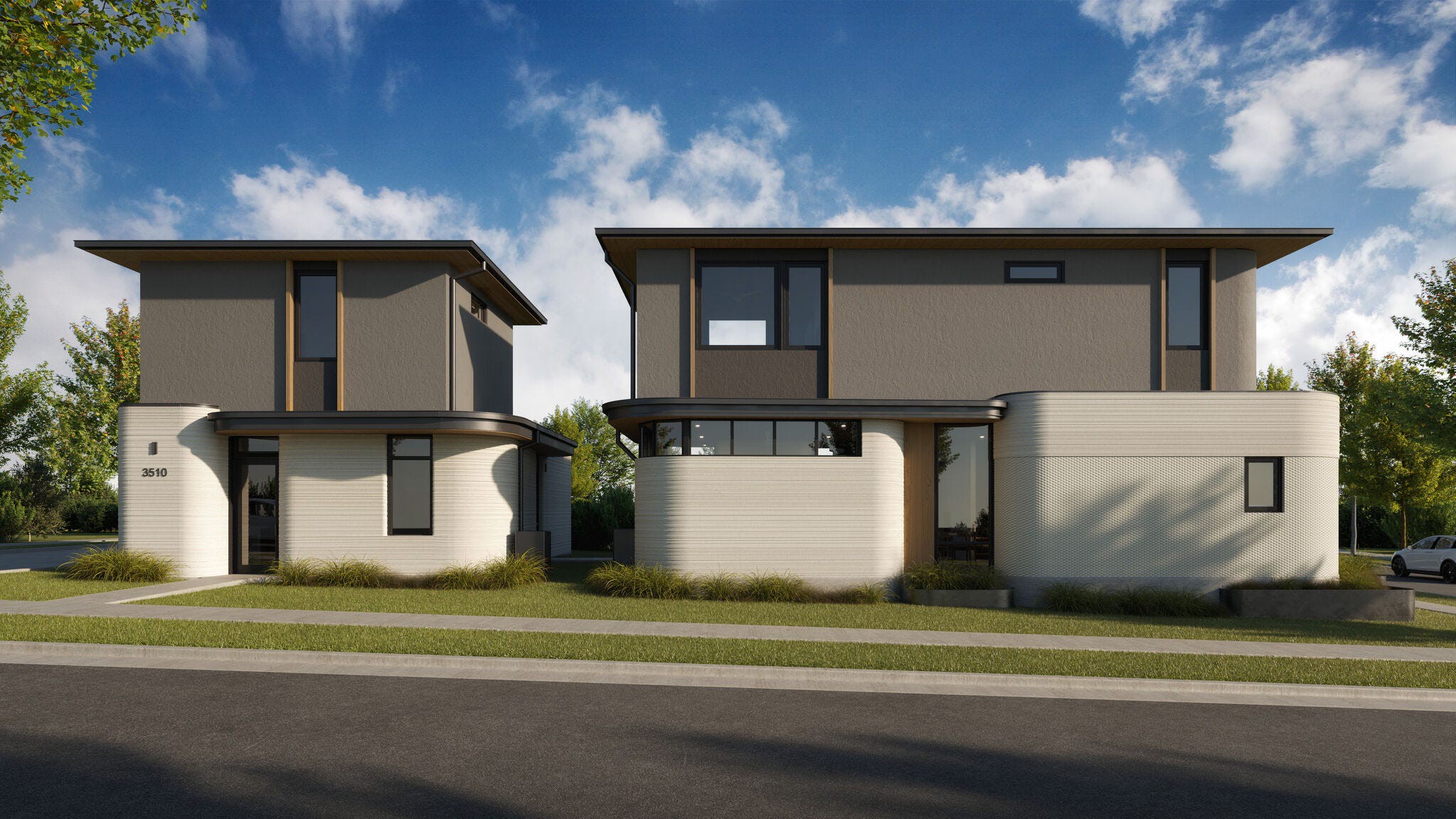business
ICON 3D-Prints Affordable Homes in Austin's Mueller Neighborhood
ICON is constructing three affordable 3D-printed homes in Austin's Mueller neighborhood as part of a program ensuring 25% of housing remains income-qualified.
Published July 31, 2025 at 11:30am

The edges of the Mueller neighborhood along Tom Miller Street are quiet, even as a dozen homes are being constructed nearby. That’s because they’re being 3D-printed by Austin-based construction tech company ICON Technology Inc.
Among them are three houses priced as low as $195,000, part of the Mueller Affordable Homes Program, which reserves 25% of the neighborhood’s housing for income-qualified buyers. The homes are being built by ICON using robotic concrete printers on site.
"These are some of the last available lots in all of Mueller," Brooke Bauguess, a spokesperson for ICON, told the American-Statesman. "Mueller is known for mixed-use, mixed income homes. And so to do both affordable and market rate homes, it was a dream come true to be able to marry all the things together and be able to build in the city of Austin."
The one-bedroom affordable homes will be 650 square feet and are currently being printed on site.
ICON began printing the dozen-home development earlier this summer. The remaining homes — not part of the affordability program — are market-rate units, priced between the mid-$300,000s and $1.3 million.
The first homes will be ready for buyers to move into by the end of the year.
ICON, co-founded by Jason Ballard in 2017, is considered a hardware and software unicorn, having most recently raised $56 million to support its new robotic printing system, Phoenix, which was unveiled at South by Southwest last year.
ICON cut 114 jobs in January. The company said it was realigning its workforce to focus on its top priorities, which included speeding the development of Phoenix. ICON plans to begin printing with Phoenix next year.
The company is currently using three of its Vulcan printers at the Mueller site to print the homes’ wall systems, which include the walls, floor and roofs, with concrete. These wall systems, depending on the lot, can be built by Vulcan in two to four weeks. Afterwards normal home construction — like interior designing, windows, flooring, painting and more — can take place.
The printers, powered by a 60 kVa generator, operate quietly, emitting a soft hum as they lay concrete. Each Vulcan printer requires only one operator, with a small support crew on site to assist as needed.
According to ICON, its 3D printing method is faster, requires less intensive labor, and uses 30% less material than traditional wall construction.
"That's one of the big benefits of robotic construction, is being able to deliver a home's full wall system with speed and predictability and and save on time and materials and labor, which is an issue plaguing the home building industry," Bauguess said.
The Mueller Affordable Homes Program is a neighborhood initiative to ensure 25% of the area’s housing is affordable. The idea was to ensure housing in the area for those who would normally be priced out or excluded from the new development, which has an average home price of $738,624.
Potential buyers, with a priority given to seniors and families, must earn 60% or less than the median family income. The median household income in Travis County is $97,543, meaning qualifying buyers must earn less than $58,525.
The Mueller Affordable Homes Program was established as part of the original development agreement between Catellus Development Corp. and the city of Austin, which partnered 20 years ago to redevelop the site of the city’s former airport.
Mueller, just northeast of downtown along Airport Boulevard, includes both apartment complexes and single-family homes, alongside retail, offices, restaurants and public parks.
Once complete, the 700-acre neighborhood will include about 6,900 single-family and multifamily homes, with more than 1,725 of those designated as affordable. It will also feature 4.8 million square feet of commercial space and 144 acres of public parks and open space.
Mueller is already home to several major institutions, including Dell Children’s Medical Center, an H-E-B grocery store, the Austin ISD Performing Arts Center, the Thinkery children’s museum, and Austin Film Studios.
ICON’s Mueller development is not their only project with affordable housing.
The company is currently over halfway done with the over 120 homes for the Community First Village on Hoge Eye Road in Northeast Austin. The Community First Village has over 300 tiny houses for people emerging from homelessness in Central Texas, and ICON first began printing some homes for the community in 2019.
ICON believes that its robotic 3D-printing is a solution for solving the housing crisis in Austin and across the U.S.
"This wouldn’t have been possible had we not had robotic construction and doing that at scale," Bauguess said. "That's where you're really going to start to see making a dent on the housing crisis and being able to build more durable, resilient, more energy-efficient homes faster and more predictable and with less labor. It checks all the boxes, and we're just really excited to be able to be doing it here in our home city of Austin."

